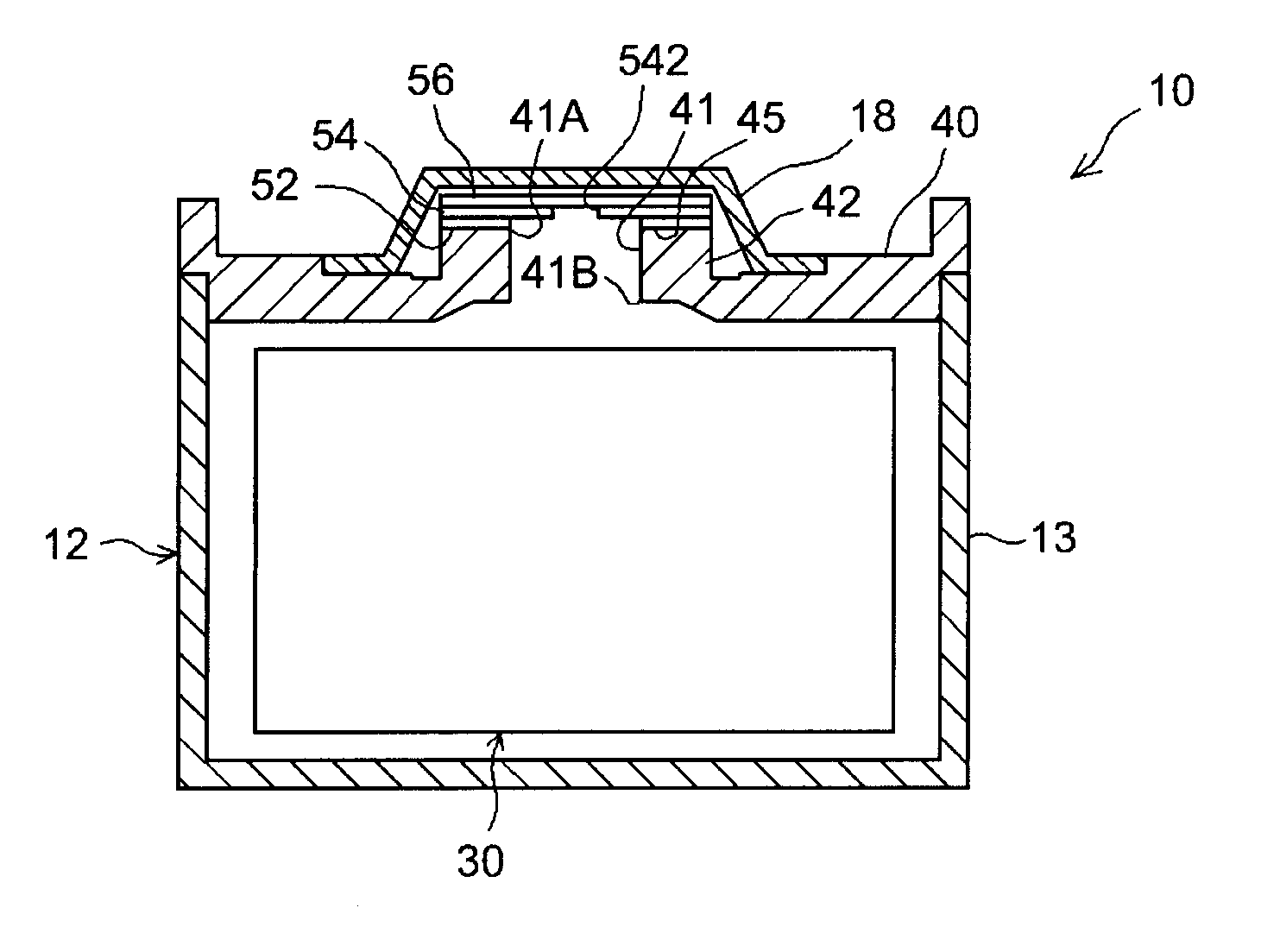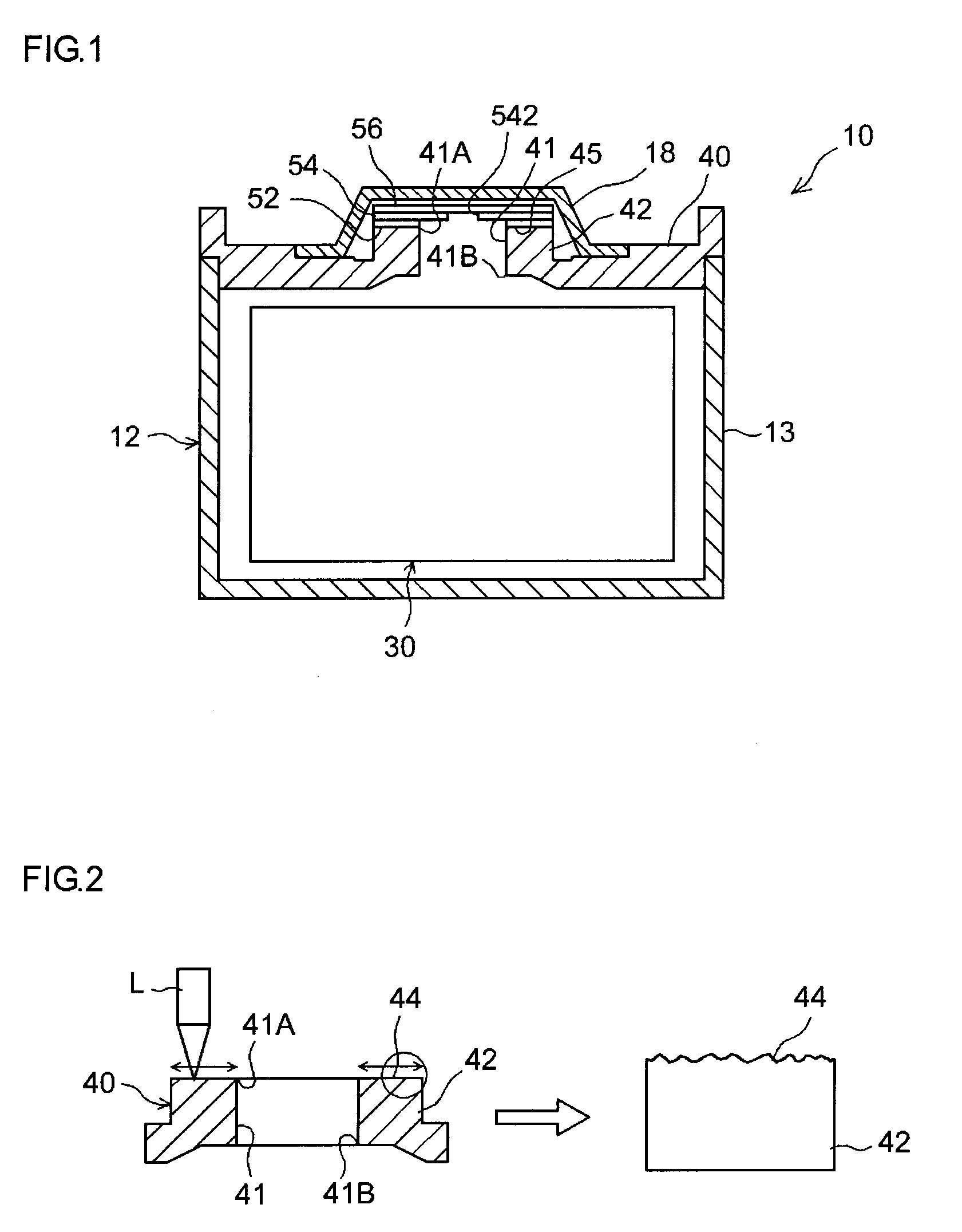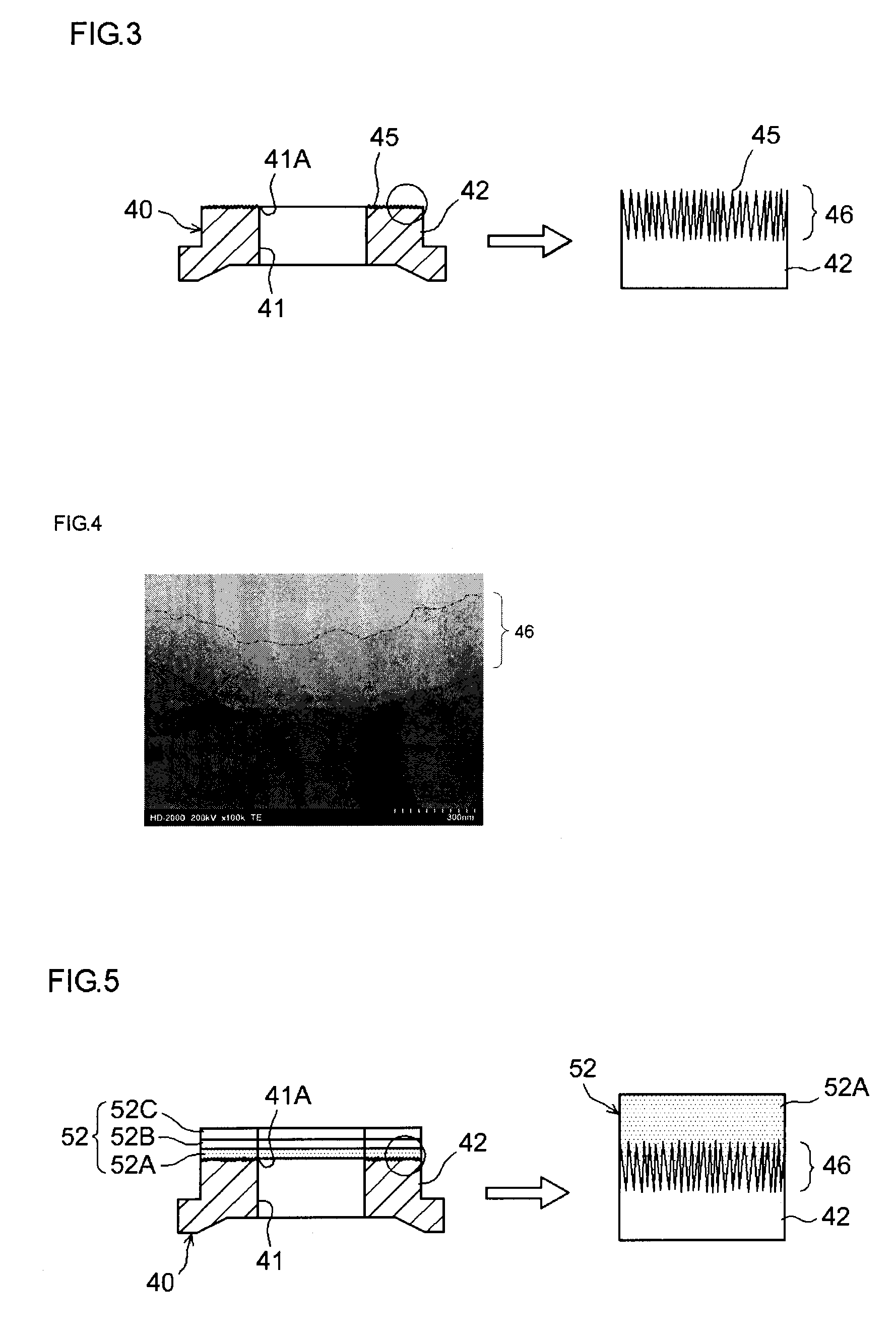Sealed type cell manufacturing method
a manufacturing method and seal technology, applied in the direction of sustainable manufacturing/processing, cell components, batteries, etc., can solve the problems of difficult automation, difficult to increase productivity, and difficult to fit and remove rubber stoppers, and achieve good weldability, good weldability, and good weldability.
- Summary
- Abstract
- Description
- Claims
- Application Information
AI Technical Summary
Benefits of technology
Problems solved by technology
Method used
Image
Examples
example 1
[0045]As illustrated for instance in FIG. 1, the lithium-ion cell according to the present example comprises an electrode body (wound electrode body) 30 in which an elongate sheet-like positive electrode and negative electrode are wound together in a flat manner, with an elongate-sheet separator interposed in between; and an external case 12 (in the present example, a flat box-like case) shaped so as to house the wound electrode body 30.
[0046]As illustrated in FIG. 7, the wound electrode body 30 can be manufactured in the same way as the wound electrode body in ordinary lithium-ion cells, by stacking an elongate sheet-like positive electrode (positive electrode sheet) 32 and a negative electrode (negative electrode sheet) 34, together with two elongate sheet-like separators (separator sheets, not shown), and winding the resulting stack in the longitudinal direction, after which the wound body is squashed flat from the side-face direction. In the present example, the positive electro...
example 2
[0070]The below-described evaluation test (electrolyte solution vapor exposure test) was carried out in order to assess the influence of the laser irradiation process on the welding strength of the resin films.
[0071]Specifically, Al plates (untreated Al plates) 0.8 mm thick, 13.5 mm wide and 110 mm long were prepared. A through-hole having a diameter of 1.6 mm was opened in the Al plates, such that the center of the through-hole stood substantially at the center of the plate, in the width direction, and at about 70 mm from one end of the plate, in the longitudinal direction. A laser irradiation process was carried out, under the conditions set out below, over an area having a diameter of 4.4 mm centered around the through-hole. As a result there were prepared Al plates for film welding according to samples 1 to 10. The surface area actually irradiated by the laser spot was of about ⅔ of the area scanned by the laser, at a scanning speed of 3000 mm / s.
[0072]Laser Irradiation Process C...
example 3
[0082]An Al plate (sample 17) was prepared through a laser irradiation process under the same conditions as in sample 3 of Example 2. Also, Al plates were prepared by subjecting an Al plate to a laser irradiation process under the above conditions, followed by argon sputtering onto the laser-treated surface, using an X-ray photoelectron spectroscopy (XPS) apparatus during 0.1 seconds (sample 18) or 1 minute (sample 19). The surface of the Al plate of sample 17 has formed thereon an aluminum oxide layer about 250 nm thick as a result of the above-described laser irradiation process. In the Al plates of samples 18, 19, the formed aluminum oxide layer is eroded by argon sputtering, from the top end of the oxide layer. The thickness of the aluminum oxide layer of the Al plate of sample 18 is of about 230 to 240 nm, while the thickness of the aluminum oxide layer of the Al plate of sample 19 is smaller than about 100 nm.
[0083]Film pieces identical to those of Example 2 were heat-welded t...
PUM
| Property | Measurement | Unit |
|---|---|---|
| thickness | aaaaa | aaaaa |
| speed | aaaaa | aaaaa |
| transmittance | aaaaa | aaaaa |
Abstract
Description
Claims
Application Information
 Login to View More
Login to View More - R&D
- Intellectual Property
- Life Sciences
- Materials
- Tech Scout
- Unparalleled Data Quality
- Higher Quality Content
- 60% Fewer Hallucinations
Browse by: Latest US Patents, China's latest patents, Technical Efficacy Thesaurus, Application Domain, Technology Topic, Popular Technical Reports.
© 2025 PatSnap. All rights reserved.Legal|Privacy policy|Modern Slavery Act Transparency Statement|Sitemap|About US| Contact US: help@patsnap.com



